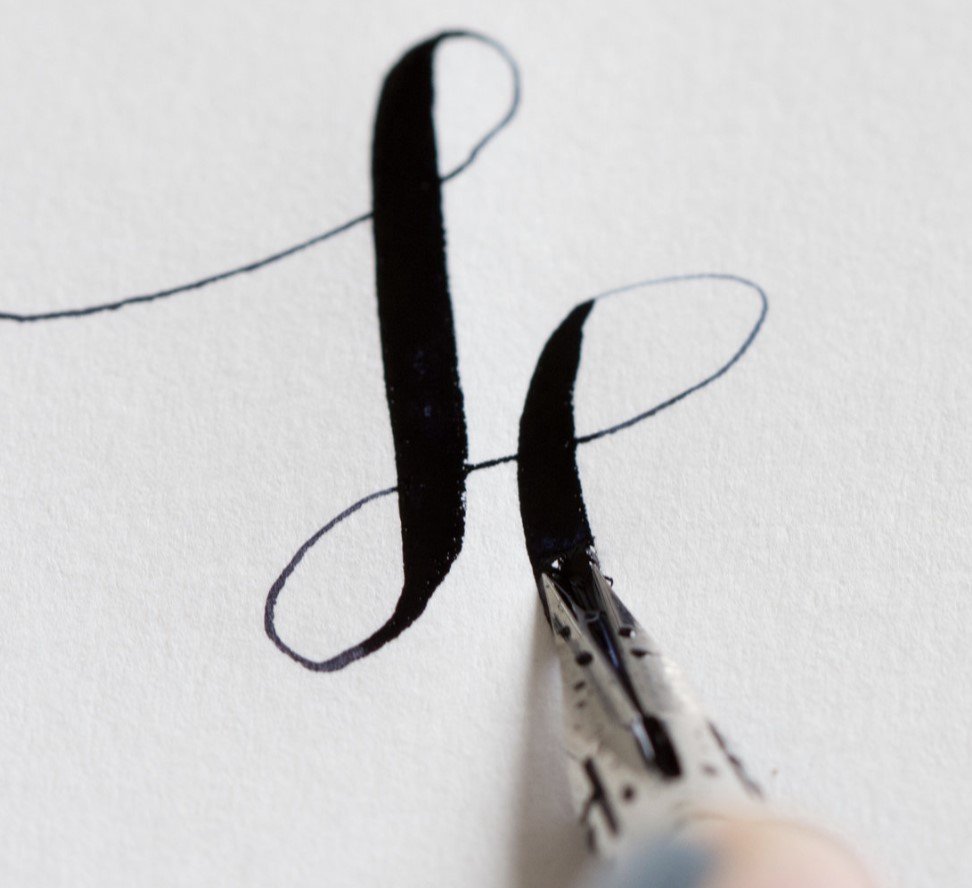(Caroline Foty's first fountain pen was a 1970s Sheaffer No Nonsense that still writes perfectly. Since she discovered pens by independent makers, she wants "one of each, please" and wants to meet all the makers. Maybe you do, too. She lives in Baltimore with pens, cats, and all kinds of fiber arts supplies.)
Pierre Miller says, “I wanted to make things I couldn’t buy.” The word Desiderata means “desired things,” and in this case the first desired thing was: a writing instrument that used a commonly available dip nib, had an ink reservoir, and offered a pleasant purchase experience.
“I bought lots of flex pens that didn’t work the way I really wanted. The vintage ones that did, were not replaceable in case of any damage or failure. Dip nib holders with reservoirs didn’t quite give me what I was looking for.” What’s a writer to do?
“I started thinking, if I could solve this problem to my satisfaction, others might like the result too.”
Miller was working as a chemist at the time and teaching piano, and one of his students was a tool and die maker who taught him how to use lathes and other machine tools. He began with a pen turned from wood, with a feed he machined from ebonite, and then began to iterate to improve the design. The iterating began in late 2012, and it was 2014 before he had a product he felt he could sell to another person.
A few years into his penmaking career, a friend suggested adapting the nib housings he makes to be compatible with other industry standard nib housings. So in addition to accepting a collar for a Zebra-G flex nib, his pens also are set up for screw-in Jowo nib housings. Study with Richard Binder trained him to properly tune those nibs.
Miller wanted an ink reservoir larger than a cartridge or converter to cope with the amount of ink that flex writing lays down. Therefore, he tried designing lots of filling systems that didn’t entirely pan out in practice, on the way to the pump and screw piston fillers he uses now. Perhaps it’s no surprise that one of his past hobbies was building scale models of spacecraft. Nowadays, “the workshop of my childhood dreams” and his young family take up all his time.
In addition to wood, he also uses ebonite, acrylic, cellulose acetate, galalith, and titanium in his shop. Despite making every part of his pens himself, making the materials themselves is not a step Miller plans to take. “There are so many other people who have a better eye for color, there’s no need for me to do that.”
His most complex pen is his Chiaroscuro model, a small diameter fountain pen with twelve curved, contoured facets. “I chose this model to solve a problem that often happens with dark, patterned ebonite: you can’t see the pattern. I went with the facets to bring out the pattern. They were contoured because I like a challenge: the hand finishing process is laborious, but there’s nothing like it.” The first run of the Chiaroscuro included a 0.4mm italic nib ground in-house.
People who make things cite all kinds of inspiration when asked about what they do. For Miller, even beyond his problem-solving approach to his craft, inspiration is everywhere. “I’m so impressed by the world around me I don’t need to go looking farther for inspiration.” At the same time, the search for something he couldn’t find was the spur to his creativity. “The reason my pens exist is that I was after a very specific sort of writing instrument. I wanted to make pens that no market force has driven into existence.” The rewards of the work come directly from those who use the pens. “What I like best about making pens is when people tell me they appreciate the work I do.”
What’s a favorite pen you didn’t make yourself? “The Parker 51.” Why? “That’s the best fountain pen ever made, and I’m a perfectionist!” To him, the Parker 51 offered a host of design choices focused on achieving a good user experience, along with a bauhaus design and a hooded nib that was unique at the time it was made. “It is affordable, durable, reliable, and doesn’t call attention to itself.”
That could almost be an advertising slogan for Desiderata Pens.
When looking to the future, Miller sees himself “alternating between perfecting what I already do, and going to new places.” He is particularly drawn to working with interesting mechanisms that are no longer in production in pens today, and continuing to pursue excellence in his shop. “How you do anything is how you do everything.”
Pierre Miller’s work can be seen on Instagram, on his website, and at pen shows in St Louis, Washington DC, San Francisco, Ohio, and Chicago (his home show), and sometimes Baltimore, Boston, and Los Angeles.
An in-depth profile of Miller from a slightly different angle appears on the website Third Factor.
Enjoy reading The Pen Addict? Then consider becoming a member to receive additional weekly content, giveaways, and discounts in The Pen Addict shop. Plus, you support me and the site directly, for which I am very grateful.
Membership starts at just $5/month, with a discounted annual option available. To find out more about membership click here and join us!











